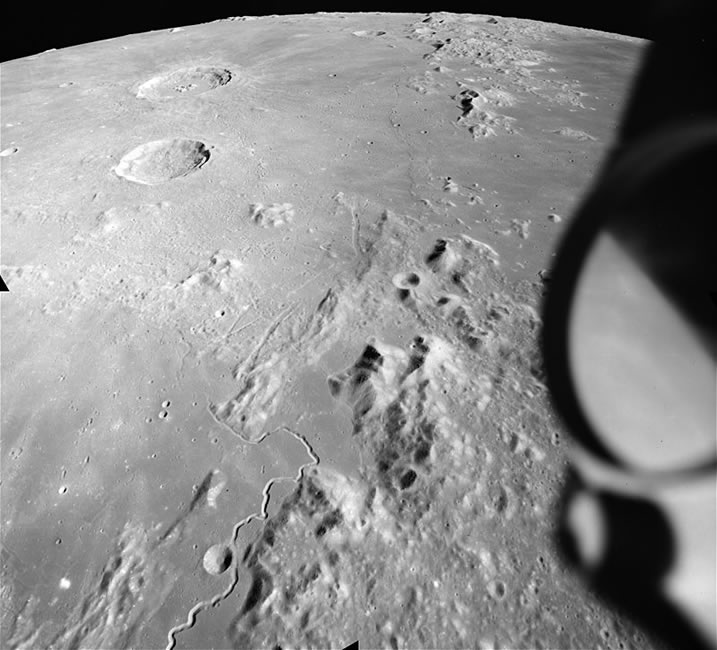Mountains
2.3 - Be able to recognise the appearance of the principal naked-eye lunar surface formations (continued in 2.4)2.4 - Understand the structure and origin of the principal naked-eye lunar surface formations, including:
d - mountains
The lunar surface features many mountains, which frequently border the maria for example,. the mountain range Appenines borders Mare Imbrium. Ranges are often named after ranges on Earth such as the Appenines, Alps, Caucaus etc.
There are many individual peaks throughout the lunar surface, and some rise to nearly 5,000 metres. Comparing the diameters of the Earth and Moon, the lunar mountains are proportionally higher.
The Appenine range sits between Mare Imbrium and Mare Serenitatis to the north of the lunar globe and features over 3000 peaks. Mons Huygens is over 4.6 km tall.
Our mountains on Earth were formed by the movement of techtonic plates or volcanic action. Lunar Mountains are thought to have been formed by impacts that released magma under the early lunar surface.
Interactive
Latin Name
Many of the Moon's features have Latin names. Appenine Mountains is usually written as Montes Apenninus.
Links
- Solar Worlds Dramatic Images of Mountains
- Fourmilab Mountains
- Dept of Geological Sciences Volcanism on the Moon

 | © All Rights Reserved |
| © All Rights Reserved |